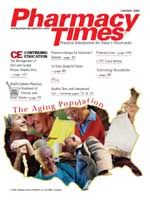CASESTUDIES
Case One: SB, a 21-year-old pharmacy student, is brought to the emergency department at the local hospital by his roommate. SB complains of a high fever (as high as 104?F), vomiting, a rash, decreased tolerance to light, a stiff neck, and a severe headache. He reports that he has never felt a headache this painful in his life. According to SB, his symptoms developed about 6 hours earlier.
SB has no significant medical history and currently does not take any medications. He is allergic to sulfa medications. He denies smoking. SB reports that he has not had any alcohol for the last 10 days because he has been studying for midterm exams.
On physical examination, SB is a lethargic, well-developed male in apparent distress. His vital signs are as follows: blood pressure 85/60 mm Hg, heart rate 105 beats/min, respiratory rate 24 breaths/min, and temperature 39.8?C. His pupils are equally round and reactive to light. He has decreased range of motion of his neck. His lungs are clear, and his heart sounds are normal. All his extremities are covered with a petechial skin rash.
Significant laboratory findings include the following: white blood cell (WBC) count 24.0 x 109/L. with 75% polymorphonuclear leukocytes (PMNs), 20% bands, 4% lymphocytes, and 1% monocytes. Cerebrospinal fluid analysis found protein 250 mg/dL, glucose 30 mg/dL, and WBC count 1.3 x 109 cells/L with 99% PMNs and 1% lymphocytes.
The physician suspects that SB has developed acute bacterial meningitis. The most likely organisms are Neisseria meningitidis and Streptococcus pneumoniae. The physician prescribes vancomycin 1 g intravenously (IV) q 12 hr and ceftriaxone 2 g IV 12 hr.
The next day, the pharmacist reviews SB's culture reports. The culture has grown Neisseria meningitidis susceptible to ceftriaxone and penicillin. According to these results, should the pharmacist recommend a continuation of the current therapy or a different regimen?
Case Two: TH, a 55-year-old male, was admitted to the hospital for treatment of a draining wound on his left foot. He injured his foot 2 wk earlier while working with heavy equipment. Immediately after the injury, the wound required stitches, and TH was given a prescription for 7 days of antibiotics. When the antibiotic therapy was completed, TH noticed increasing pain, swelling, tenderness, and drainage from the wound.
The infectious disease physician confirmed that TH has acute osteomyelitis. The physician ordered surgical debridement of the bone. Cultures obtained during the procedure grew Staphylococcus aureus. The organism was sensitive to oxacillin, cefazolin, clindamycin, and vancomycin. The physician decided to treat TH's osteomyelitis with cefazolin 2 g IV q 8 hr.
TH does not want to remain in the hospital. To appease the patient, the physician agrees to discharge him if he will continue his IV antibiotics at home. The physician contacts the pharmacy to make arrangements for home antibiotic therapy.
When the pharmacist arrives to discuss the arrangements with the patient, TH is impatient with the idea of home antibiotics. How long will TH need to continue antibiotics to treat his osteomyelitis?
Dr. Schlesselman is a clinical pharmacist based in Niantic, Conn.
Click Here For The Answer ----------->
[-]
CASE ONE: Because the culture has grown only Neisseria meningitidis and the organism is susceptible to penicillin, it is not necessary to maintain broad coverage. Continuing broad coverage with vancomycin and ceftriaxone increases the risk of developing drug-resistant organisms. The pharmacist should recommend changing SB's therapy to penicillin 3 million units intravenously q 4 hr.
CASE TWO: Treatment of osteomyelitis usually requires 4 to 6 weeks of antibiotics. If the pain, tenderness, and drainage resolve, along with healing of the wound and normalization of white blood cell count and sedimentation rates, the antibiotic can be converted to an oral agent.
toggle(getObject('exp1048685570_link'), 'exp1048685570');

